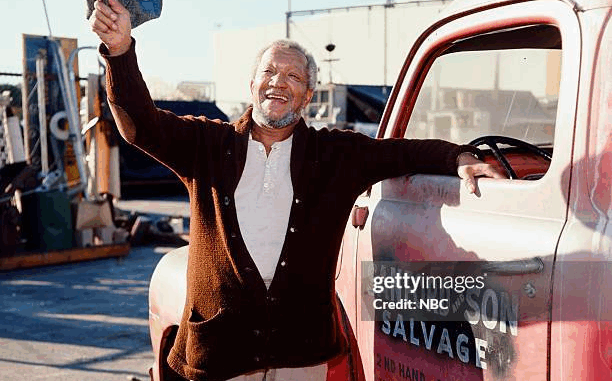
In the vast landscape of classic television, “Sanford and Son” holds a unique and enduring place. Decades after its original run (1972-1977), the sitcom continues to find new audiences in 2025, not just through nostalgic re-runs but also through its surprisingly timeless humor and its gritty, authentic portrayal of working-class life. Set in the ramshackle junkyard of Watts, Los Angeles, the show’s genius lay in its ability to extract uproarious comedy from the everyday struggles of a cantankerous father and his long-suffering son, all while offering a rare glimpse into a segment of society largely overlooked by mainstream media.
At the heart of “Sanford and Son” was the unparalleled comedic genius of Redd Foxx as Fred G. Sanford. His rapid-fire insults, exaggerated ailments, and relentless schemes to avoid work became iconic. Fred was a character unlike any other on television at the time: an aging, often prejudiced, yet undeniably lovable curmudgeon who, despite his flaws, always managed to win the audience’s affection. In 2025, his brand of observational humor and his ability to perfectly deliver a cutting put-down feel remarkably fresh, proving that true comedic talent transcends generations.
The dynamic between Fred and his son, Lamont (Demond Wilson), was the show’s emotional core. Lamont, the voice of reason and the engine of their junkyard business, constantly grappled with Fred’s antics, his feigned heart attacks (“It’s the big one, Elizabeth! I’m coming to join ya!”), and his stubborn refusal to embrace change. This generational conflict, coupled with a deep underlying love, provided endless comedic possibilities and a relatable human element that kept viewers invested. Their constant bickering, punctuated by moments of genuine affection, remains a masterclass in sitcom chemistry.
“Sanford and Son” was also groundbreaking in its portrayal of a Black working-class family that was neither idealized nor stereotypical. The characters were flawed, complex, and deeply human. The show didn’t shy away from depicting the economic struggles, racial tensions, and societal biases that were part of their daily lives, but it always did so with humor and humanity. It offered a rare glimpse into a vibrant community, populated by memorable supporting characters like Aunt Esther (LaWanda Page), Bubba, and Rollo, who further enriched the show’s comedic landscape.

The enduring appeal of “Sanford and Son” in 2025 is a testament to its authenticity and its fearless embrace of character-driven comedy. It proved that laughter could be found in the most unlikely of places, and that even in a junkyard, profound truths about family, aspirations, and the human condition could be explored. The show’s legacy is not just its quotable lines and memorable characters, but its trailblazing role in bringing diverse, working-class narratives to the forefront of American television. Fred Sanford, the junkyard king, truly left an unforgettable mark, and his reign of laughter continues.
